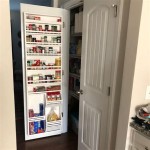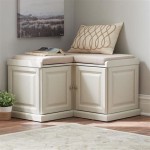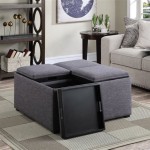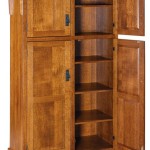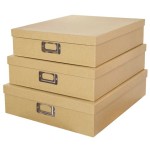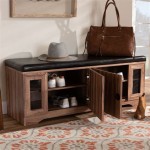Essential Aspects of Cloth Storage Ideas
Maintaining an organized and clutter-free living space requires efficient storage solutions for various household items, especially clothing. With a well-organized closet or wardrobe, you can not only save space but also keep your garments wrinkle-free, accessible, and protected. Here are some essential aspects to consider when planning your cloth storage:
1. Assess Your Storage Needs
Before diving into storage solutions, assess your current wardrobe and identify your storage requirements. Determine the types and quantities of clothing you own, including seasonal items, everyday wear, formal attire, and accessories. This will help you choose the most suitable storage systems for your needs.
2. Maximize Vertical Space
Vertical space is often underutilized in closets and wardrobes. Consider installing shelves, drawers, or hanging rods at different heights to maximize storage capacity. Stackable storage bins or boxes can help organize items vertically, making them easier to find.
3. Organize by Category
Categorizing your clothing by type, color, or season simplifies retrieval and maintains order. Use drawer dividers or shelf organizers to separate different types of garments, such as shirts, pants, skirts, and accessories. Hanging items on designated rods based on type or color also enhances accessibility.
4. Utilize Multifunctional Storage
Choose storage items that serve multiple purposes. Ottomans with built-in storage can provide extra seating while accommodating blankets or extra pillows. Headboards with shelves or drawers offer additional storage without taking up floor space. Vacuum storage bags can reduce the volume of bulky items like winter coats or bedding.
5. Consider Lighting
Adequate lighting is crucial for finding items quickly and easily. Install natural or artificial lighting in your closet or wardrobe. Motion sensor lights can provide illumination when needed, while LED strip lights under shelves or in drawers can enhance visibility.
6. Utilize Wall Space
Make use of wall space by installing hooks, shelves, or hanging organizers. These can accommodate belts, scarves, ties, or other accessories that may not fit into drawers or closets. Wall-mounted organizers also free up valuable floor space.
7. Maintain a Regular Decluttering Routine
Regularly declutter your closet or wardrobe to discard unused or outdated items. Donate items you no longer need or consider selling gently used clothing to make additional space and keep your storage organized.
8. Choose Durable and Aesthetically Pleasing Storage
Invest in durable storage materials such as wood, metal, or sturdy plastic to ensure longevity. Consider the aesthetic appeal of your storage systems, as they will contribute to the overall ambiance of your living space.
9. Personalize Your Storage
Add personal touches to your storage solutions to make them more enjoyable to use. Use decorative storage boxes, label drawers or shelves, and incorporate artwork or photographs to create a unique and inspiring space.
10. Seek Professional Assistance if Needed
If you struggle with organizing your clothing or require a customized storage solution, consider consulting with a professional organizer. They can assess your specific needs and design an efficient and aesthetically pleasing storage system that meets your requirements.

Best Clothing Storage Ideas Without A Closet

12 No Closet Clothes Storage Ideas Room Makeovers To Suit Your Life

Best Clothing Storage Ideas Without A Closet

38 Creative Clothes Storage Solutions For Small Spaces Digsdigs
:max_bytes(150000):strip_icc()/fold-stack-method-aca07964966f47fc8a77522e1d19fc67.jpg?strip=all)
10 Fresh Clothes Storage Ideas

25 Best Clothes Storage Ideas For Small Bedrooms

Closet Organization Ideas Clothing Storage Solutions

26 Clothes Storage Ideas To Declutter Your Entire Wardrobe Real Homes

Clothes Storage Ideas 19 For Small Spaces Reader S Digest

26 Clothes Storage Ideas To Declutter Your Entire Wardrobe Real Homes
Related Posts


